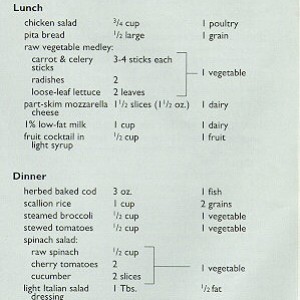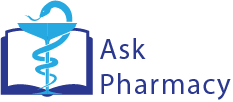
IN January 6, 2016, DASH diet ranked best diet for 6th year in a row by “US News & World Report”.1
DASH which stands for Dietary Approaches to Stop Hypertension was developed by the National Heart, Lung, and Blood Institute to help people prevent high blood pressure.
The DASH eating plan focuses on eating plenty of fruits, vegetables, whole grains, poultry, fish, and nuts,while lowering amount of fats, red meats, sweets, and sugared beverages , and salt.
DASH is not a weight loss program but if followed correctly will also result in weight loss. According to Mayo Clinic: “by following the DASH diet, you may be able to reduce your blood pressure by a few points in just two weeks. Over time, your systolic blood pressure could drop by seven to 12 points, which can make a significant difference in your health risks. The DASH diet emphasizes portion size, eating a variety of foods and getting the right amount of nutrients.” 2
DASH diet goal is to scale down the amount of salt in diet compared with what a person might get in a more traditional diet, which can amount to a colossal 3,500 mg of sodium a day or more.
In a Standard DASH diet patients can consume up to 2,300 milligrams (mg) of sodium a day. while if a patient is 51 and older, african american, or have hypertension, diabetes or chronic kidney disease a daily sodium intake must be reduced to 1,500 mg a day . The American Heart Association recommends 1,500 mg as an upper limit for all adults.
Here’s a look at the recommended servings from each food group .for the 2,000-calorie-a-day DASH diet 3 .4
Grains (bread, cereal, rice and pasta) : 6 to 8 servings a day
One serving of grains can contain 1 slice whole-wheat bread, 28 gm dry cereal, or 1/2 cup cooked cereal, rice or pasta.
whole grains have more fiber and nutrients than refined grains so use brown rice instead of white rice, whole-wheat pasta instead of regular pasta and whole-grain bread instead of white bread. .
Vegetables ( Tomatoes, carrots, broccoli, sweet potatoes, greens and others) : 4 to 5 servings a day
One serving include 1 cup raw leafy green vegetables or 1/2 cup cut-up raw or cooked vegetables.
Vegetables are full of fiber, vitamins, and minerals as potassium and magnesium.
Fresh or frozen vegetables can be used. In case of using frozen and canned vegetables, choose those labeled as low sodium or salt free.
Fruits: 4 to 5 servings a day
One serving include 1 medium fruit or 1/2 cup fresh, frozen or canned fruit or 100 gm of juice.
Fruits contain lots of fiber, potassium and magnesium and are typically low in fat — with the exceptions of avocados and coconuts.
in case of using canned fruit or juice, it should be sugar-free
Dairy ( Milk, yogurt, cheese and other dairy products ) : 2 to 3 servings a day
One serving include 1 cup skimmed or low-fat milk, 1 cup yogurt, or 43 gm cheese.
dairy products are major sources of calcium, vitamin D and protein. But the key to reduce hypertension is to choose dairy products that are low fat or fat-free because otherwise they can be a major source of saturated fat. Patients who have trouble digesting dairy products or are lactose intolerant, can choose lactose-free products or consider taking an OTC product that contains the enzyme lactase, which can prevent the symptoms of lactose intolerance.
amounts of cheeses should be decreased,even low fat cheese, because they are typically high in sodium.
Lean meat, poultry and fish: 6 or fewer servings a day
One serving include 1 oz. cooked skinless poultry, seafood or lean meat or 1 egg.
Meat can be a rich source of protein, B vitamins, iron and zinc. None the less meat portion should be decreased due to its fat and cholesterol content.
Trim away skin and fat from poultry and meat. grill or roast the meat instead of frying in fat.
Eat fish high in heart friendly fats, such as salmon, herring and tuna. These types are high in omega-3 fatty acids, which can help lower total cholesterol.
Nuts (Almonds), seeds (sunflower seeds) and legumes ( kidney beans, peas, lentils ): 4 to 5 servings a week
One serving include 1/3 cup (1 1/2 oz.) nuts, 2 tablespoons seeds, or 1/2 cup cooked beans or peas.
foods in this family are good sources of magnesium, potassium and protein. They’re full of fiber and phytochemicals (plant compounds that are protective against some cancers and cardiovascular disease). Serving sizes are small and are intended to be consumed weekly because these foods are high in calories.
Fats and oils: 2 to 3 servings a day
One serving include 1 teaspoon soft margarine, 1 tablespoon mayonnaise or 2 tablespoons salad dressing.
Fat helps absorb essential vitamins and helps body’s immune system. But too much fat increases risk of heart disease, diabetes and obesity. The DASH diet aim to a healthy balance by limiting total fat to 27 percent or less of daily calories from fat, abd daily saturated fat to less than 6 percent of total calories.
Sweets: 5 or fewer a week
One serving include 1 tablespoon sugar, jelly or jam, 1/2 cup sorbet, or 1 cup lemonade.


